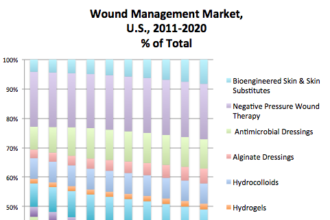Healthcare diagnosis in the palm of your hand, supersized health plans and hospital systems, and a focus on healthcare security are just a few of the top trends predicted for 2016 which are coming to fruition as we reach the mid-way point of the year. Here is our list of the top 3 healthcare trends of 2016 that industry executives should continue to monitor this year. Healthcare Consumer Technology From Telemedicine, to online diagnostic assessments such as those offered by DocResponse, healthcare technology for consumers is on the rise bringing healthcare interactions out of the clinical setting and into the virtual and online space. This is definitely one of the hottest emerging top 3 healthcare trends of 2016. This is great news for consumers as it leads to more empowered, interactive control over a person’s individual health. Consider that:
- More than half of all U.S. hospitals currently have a telemedicine program
- Adoption of health-related smart phone apps has doubled in the last two years
- Online diagnostic tools now offer a safe, reliable alternative to googling symptoms as discovered in a study by Harvard Medical School; and
- People are more personally engaged in their health than ever through the usage of wearable technologies which track everything from weight and exercise, to sleep and blood sugar levels
It may come as no surprise that these advancements are proving incredibly valuable for providers and payers who offer them and encourage their usage:
- Telemedicine programs are being utilized to ensure appropriate healthcare coverage in rural areas and to increase healthcare provider resources in areas of shortage
- Online diagnostic tools such as DocResponse are preventing unnecessary admissions to the emergency room, while increasing patient engagement and satisfaction (more information here)
- Personal healthcare apps and trackers are being utilized as an add on to preventive programs, and gathered data can be used by providers to help patients improve their overall health based on data rather than intuition
Super-Sized Health Plans and Hospital Systems In what is being called by Price Waterhouse Cooper experts “the year of merger mania” health systems and insurers are consolidating at rates never before seen in the industry. A full list of recent mergers can be seen here. In a post healthcare reform world healthcare payers and health systems are hedging their bets that bigger means better. Especially when it comes to merging both payer and provider organizations. This top 3 healthcare trend should not be overlooked. Merger strategies are being utilized as a key way to decrease healthcare costs, and improve healthcare coverage, but activity will continue to be monitored as some experts fear healthcare monopolies that could have a negative impact on overall healthcare provision and access. Putting the Patient at the Center of Care From ensuring that patients are involved in their health, to having reimbursement rates tied to patient satisfaction – the trend to create healthier, happier, more engaged healthcare consumers will continue throughout 2016. The name of this movement is called patient centricity, and you can read more about it on our post “Patient Centricity- It’s Time for a New Focus” Healthcare leaders and innovators are working to develop strategies to improve how healthcare consumers rate their healthcare experience. This is a challenge as more and more organizations struggle to provide better care with less healthcare resources than ever. Organizations who succeed in improving patient satisfaction and engagement could see big rewards in both demand market generation for their services, and increased reimbursement rates related to quality in the future. Overall healthcare is experiencing sweeping movements, and the top 3 healthcare trends of 2016 are reflective of this. The emphasis will continue to focus on how to provide cost effective healthcare that simultaneously provides value and quality for consumers. This trend will continue to emerge within the nation’s largest payers and healthcare systems, which will continue to grow through increased upcoming mergers and acquisitions. Organizations which use technology will be able to help decrease costs, reduce unnecessary utilization and focus on improved satisfaction for their patients. Healthcare consumers will gain more power and control over their personal health than ever before. What do you think the biggest trends in healthcare are today? We would love to hear your opinion. Please share with us in the comments below or on social The post Top 3 Healthcare Trends of 2016 appeared first on DocResponse: The World’s Most Accurate Symptom Checker.





